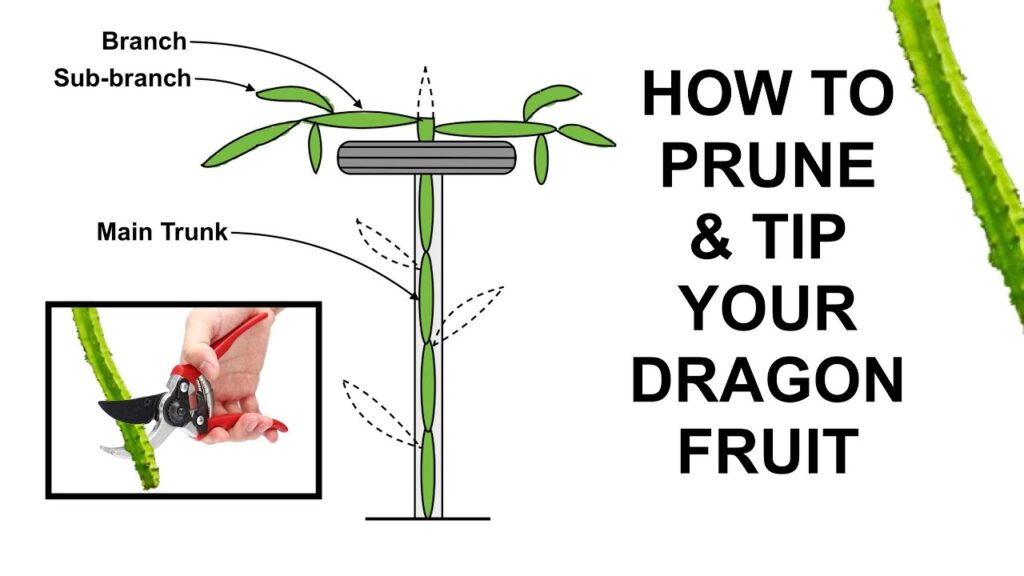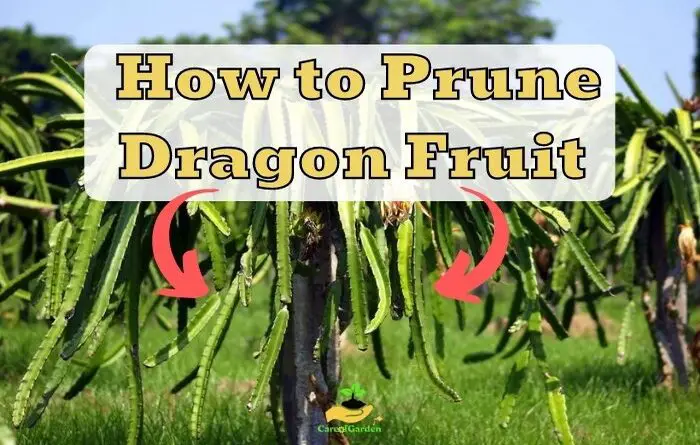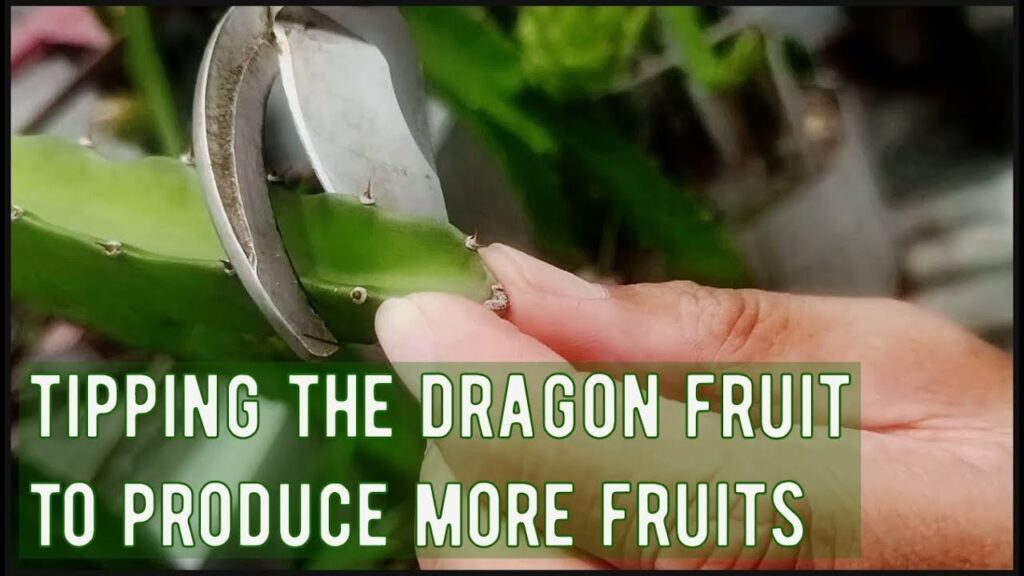In the realm of dragon fruit cultivation, the art of surgical pruning emerges as a nuanced practice essential for optimising yield, promoting structural integrity, and fostering overall plant health. This article takes an in-depth journey into the diverse methodologies of surgical pruning in dragon fruit, exploring the intricacies, benefits, and expert techniques that elevate this horticultural craft.
Table of Contents

The Art and Science of Surgical Pruning
Defining Surgical Pruning
Surgical pruning transcends conventional trimming, delving into the realm of precision and deliberate intervention. It involves the targeted removal of specific plant parts, such as shoots, branches, or buds, with the intention of influencing growth patterns, maximising light exposure, and mitigating disease risk.
The Purpose Behind Surgical Pruning
The objectives of surgical pruning in dragon fruit are manifold. By strategically removing unwanted or unproductive plant components, growers can redirect energy towards desirable areas, enhancing fruit development and optimising resource utilisation. Additionally, surgical pruning plays a pivotal role in shaping the plant’s architecture, ensuring a harmonious balance between vegetative and reproductive growth.

Expert Techniques of Surgical Pruning
1. Selective Shoot Removal
One of the foundational methods of surgical pruning in dragon fruit involves the selective removal of shoots. This meticulous process targets specific branches or stems, allowing growers to manage the plant’s vigour and direct energy towards key areas. By eliminating overcrowded or weak shoots, the remaining ones flourish, fostering a robust and well-balanced canopy.
2. Thinning and Canopy Sculpting
Thinning the canopy through the strategic removal of excess growth is an art form within the realm of surgical pruning. This method enhances air circulation and light penetration, mitigating the risk of fungal infections and facilitating optimal photosynthesis. Canopy sculpting, a finer aspect of thinning, involves shaping the plant’s silhouette for aesthetic appeal and improved fruit accessibility.

3. Bud Culling for Fruit Enhancement
A surgical approach to bud culling is integral to maximising fruit quality and size. By selectively removing buds in specific locations, growers encourage the plant to channel its energy towards fewer, but more substantial, fruits. This method is particularly crucial for varieties where a few large, visually appealing fruits are preferred over numerous smaller ones.
4. Disease Management through Surgical Pruning
Beyond shaping the plant, surgical pruning in dragon fruit serves as a strategic tool for disease prevention. Prompt removal of infected or diseased plant parts minimises the risk of pathogen spread. This method is particularly vital in regions where fungal and bacterial diseases pose significant threats to dragon fruit crops.

Precision Tools: Instruments for Surgical Pruning
1. Pruning Shears
Pruning shears, also known as secateurs, are the unsung heroes of surgical pruning. Designed for precision, these handheld tools come in various types, including bypass and anvil pruners. Bypass pruners, with curved blades that pass each other like scissors, are ideal for clean cuts on living tissues. Anvil pruners, featuring a straight cutting blade against a flat surface, excel at tackling dead or woody material.
2. Loppers for Larger Cuts
When the scope of pruning extends beyond delicate shoots, loppers step onto the stage. With longer handles and larger blades, loppers effortlessly handle thicker branches. The bypass and anvil distinctions apply here as well, allowing for versatility in tackling different pruning scenarios within the context of surgical pruning in dragon fruit.
3. Handsaws for Structural Adjustments
For more substantial structural adjustments during surgical pruning, handsaws become indispensable. Their efficiency in swiftly cutting through larger branches facilitates precise shaping of the plant canopy. Fine-toothed saws offer smooth cuts, minimising the risk of damage to adjacent tissues and ensuring optimal healing.
Best Practices in Surgical Pruning
1. Timing Is Everything
Precision in surgical pruning of dragon fruit extends beyond technique to timing. Optimal periods for pruning vary based on the local climate and dragon fruit varieties. However, a general recommendation is to conduct surgical pruning during the dormant season or when the plant exhibits reduced growth activity.
2. Sterilisation for Healthy Outcomes
Maintaining hygiene is paramount in the delicate dance of surgical pruning. Sterilising pruning tools between cuts and plants prevents the inadvertent spread of diseases. This meticulous approach safeguards the overall health of the dragon fruit crop and prevents potential setbacks caused by infections.
3. Consideration of Plant Age and Growth Stage
Surgical pruning is not a one-size-fits-all endeavour; it requires a nuanced understanding of the plant’s age and growth stage. Younger plants may require less aggressive pruning, focusing on shaping and structural adjustments, while mature specimens benefit from targeted interventions to enhance fruiting potential.
Harnessing Innovation: Technological Advances in Surgical Pruning
1. Precision Pruning Robots
In the era of technological innovation, precision pruning has found an ally in robotic assistance. Precision pruning robots equipped with advanced sensors and algorithms navigate the intricacies of plant structures, ensuring accurate cuts and minimising human intervention. These robots excel in large-scale operations, enhancing efficiency and precision in surgical pruning.
2. Imaging Technologies for Decision Support
Imaging technologies, such as drones equipped with high-resolution cameras, offer decision support in surgical pruning. These tools provide growers with detailed insights into plant health, growth patterns, and potential areas for intervention. By coupling real-time imaging with expert analysis, growers can make informed decisions to optimise surgical pruning strategies.
Conclusion: Surgical Pruning in Dragon Fruit
In the symphony of dragon fruit cultivation, surgical pruning emerges as a refined and deliberate melody. The fusion of expert techniques, precision tools, and innovative technologies orchestrates a harmonious dance that optimises yield, enhances plant health, and elevates the overall aesthetics of dragon fruit orchards.
As growers continue to refine their expertise in surgical pruning of dragon fruit, the journey unfolds, revealing new nuances and possibilities. By embracing the art and science of surgical pruning, cultivators embark on a path of sustainable horticulture, where precision meets patience and the future of dragon fruit cultivation is sculpted with meticulous care.
